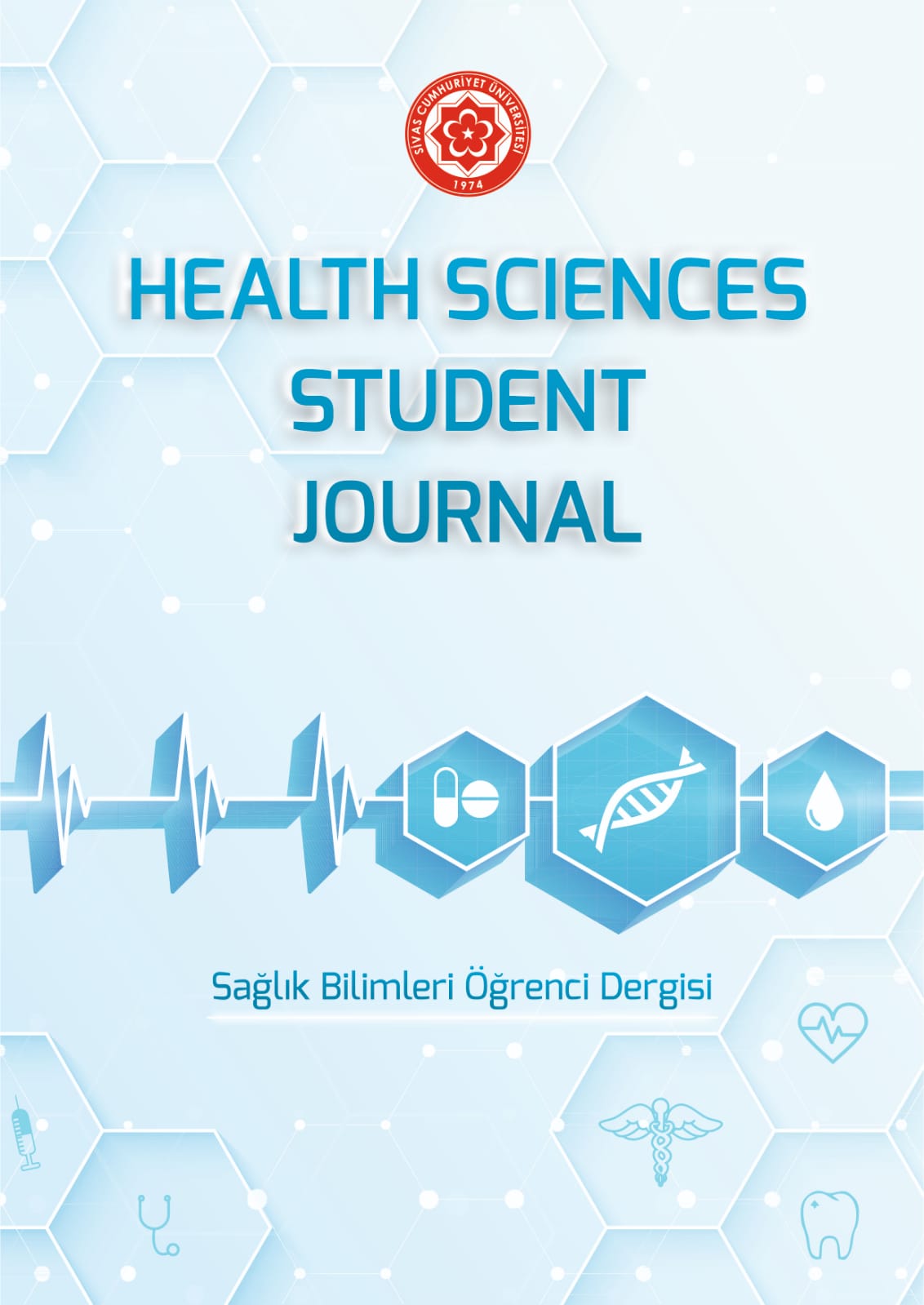![]()
Investigation of the effect of seftriaxone on glutamate excitotoxicity in the C6 glioma cell line
Yazarlar: Zeynep EKİCİ1, Fatih YULAK2,3
Corresponding author
2Fatih YULAK, Sivas Cumhuriyet Üniversitesi Tıp Fakültesi, Fizyoloji Anabilim Dalı, Sivas, Türkiye
3Sivas Cumhuriyet Üniversitesi Tıp Fakültesi Araştırma Merkezi (CÜTFAM), Sivas, Türkiye
E-mail: fatihyulak@gmail.com
Other authors
1Sivas Cumhuriyet Üniversitesi Tıp Fakültesi Dönem 3, Sivas, Türkiye
ÖZET
Glutamat merkezi sinir sisteminin en önemli eksitatör nörotransmitter maddesi olup sinaptik plastisite, öğrenme, hafıza ve diğer bilişsel işlevleri içeren çeşitli fizyolojik süreçlerde önemli rol oynamaktadır. Glutamat beyin fonksiyonlarında önemli rol oynamasına rağmen merkezi sinir sistemindeki yüksek konsantrasyona ulaşması nörotoksik etkisinin ortaya çıkmasına neden olmaktadır. Alzheimer, Parkinson, Huntington, Epilepsi ve Multiple Skleroz gibi çeşitli nörolojik hastalıkların patogenezinde glutamat eksitotoksisitesi önemli rol oynamaktadır. Bir 3. kuşak sefalosporin grubu beta laktam antibiyotik olan seftriaksonun sinir sistemi üzerine olumlu etkileri çeşitli araştırmalarda gösterilmiştir. Fakat glutamat eksitotoksisitesi üzerine etkisi henüz aydınlatılmamıştır. Bizim bu çalışmadaki amacımız C6 glioma hücre hattında seftriaksonun glutamat eksitotoksisitesi üzerine etkisinin incelenmesi olacaktır.
C6 glioma hücre kültüründe kontrol grubu, glutamat grubu, seftriakson grubu ve seftriakson+glutamat grubu olmak üzere 4 grup planlanmıştır. Kontrol grubuna herhangi bir uygulama yapılmazken seftriakson+glutamat grubuna çeşitli konsantrasyonlarda (200, 100, 50, 25, 12.5 µM) seftriakson uygulanıp 24 saat sonra glutamat uygulanmıştır. XTT hücre canlılığı testi ile ilacımızın toksisite üzerine etkisi belirlenmiştir. Hücre süpernatantlarındaki TAS ve TOS konsantrasyonları ticari kit protokolü takip edilerek belirlendi. Sonuçlar TAS ve TOS için sırasıyla mmol Trolox Equiv./L ve μmol H2O2 eşdeğer/L olarak sunuldu.
XTT hücre canlılığı testi sonuçlarına göre, seftriakson, eksitotoksisite oluşturulan C6 glioma hücrelerinde hücre canlılığını etkilememiştir ve TAS ve TOS seviyeleri üzerinde de anlamlı bir etki göstermemiştir(P>0.05).
Çalışmamızdan elde ettiğimiz verilerde seftriaksonun glial hücreleri glutamatın toksik etkisinden koruyamadığı sonucu elde edilmiştir.
Anahtar Kelimeler: C6 Glioma, Eksitotoksisite, Glutamat, Sefalosporin, Seftriakson.
ABSTRACT
Glutamate is the most important excitatory neurotransmitter substance of the central nervous system and plays an important role in various physiological processes including synaptic plasticity, learning, memory and other cognitive functions. Although glutamate plays an important role in brain functions, its high concentration in the central nervous system causes its neurotoxic effect. Glutamate excitotoxicity plays an important role in the pathogenesis of various neurological diseases such as Alzheimer’s, Parkinson’s, Huntington’s, epilepsy and multiple sclerosis. The positive effects of ceftriaxone, a 3rd generation cephalosporin group beta-lactam antibiotic, on the nervous system have been shown in various studies. However, its effect on glutamate excitotoxicity has not been clarified yet. Our aim in this study will be to examine the effect of ceftriaxone on glutamate excitotoxicity in C6 glioma cell line.
In C6 glioma cell culture, 4 groups were planned as control group, glutamate group, ceftriaxone group and ceftriaxone+glutamate group. While no application was made to the control group, ceftriaxone at various concentrations (200, 100, 50, 25, 12.5 µM) was applied to the ceftriaxone+glutamate group and glutamate was administered 24 hours later. The effect of our drug on toxicity was determined by the XTT cell viability test. TAS and TOS concentrations in cell supernatants were determined following the commercial kit protocol. Results are presented as mmol Trolox Equiv./L and μmol H2O2 equivalent/L for TAS and TOS, respectively.
According to the XTT cell viability test results, ceftriaxone did not affect cell viability in C6 glioma cells with excitotoxicity and did not show a significant effect on TAS and TOS levels (P>0.05).
Conclusions: In the data we obtained from our study, it was concluded that ceftriaxone could not protect glial cells from the toxic effect of glutamate.
Keywords: C6 Glioma, Cephalosporin, Ceftriaxone, Excitotoxicity, Glutamate.
How to Cite (APA 7)
Ekici, Z., Yulak, F. (2022). Seftriaksonun C6 Glioma Hücre Hattında Glutamat Eksitotoksisitesi Üzerine Etkisinin Araştırılması. Health Sciences Student Journal, 2(1), 1-6. https://www.healthssj.com/seftriaksonun-c6-glioma-hucre-hattinda-glutamat-eksitotoksisitesi-uzerine-etkisinin-arastirilmasi/
